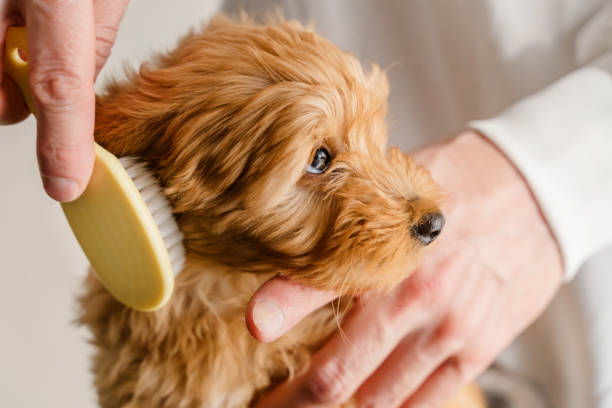We live in a world where sustainability is a key focus, and zero-waste pet care is becoming increasingly important. Pet owners should adopt eco-conscious practices when caring for their pets.
A 2024 report shows that 66% of American households own at least one pet. This proves that owning pets is a rewarding hobby. Nonetheless, pet owners face challenges when it comes to preserving the environment. Environmental sustainability and pet care can coexist in harmony, so there’s no need to worry.
Taking good care of our pets and being conscious of how our choices affect the environment are our responsibilities as pet owners. Our pets can live a healthy and happy life by adopting eco-friendly practices and using sustainable products.
How does Pet Care Affect the Environment?

Approximately 64 million tons of greenhouse gases are emitted each year by pet food consumption. As pet ownership has skyrocketed in recent years, that figure is likely to be much higher now. It was estimated that pet waste accounted for 6.6 million tons of trash annually.
There’s more to it than just pet food. In the process of making pet food, researchers also consider water, land, fossils, and pesticides. There are also packaging materials for food and treats, as well as materials for dog beds, cat trees, and poop bags – all of which contribute to the carbon footprint of a household.
Choosing Sustainable Pet Products

When it comes to caring for our pets in an eco-friendly manner, the products we choose play a crucial role. Let’s explore some key areas where we can make sustainable choices for our pets.
1. Selecting Eco-Friendly Pet Food Options
Pet diets can have a significant impact on the environment. You should consider buying sustainable pet foods. Organic ingredients, ethical farming practices, and minimal packaging waste are all important factors to consider.
a. Using Biodegradable and Compostable Pet Waste Bags
To reduce plastic pollution, it is essential to dispose of pet waste properly, and biodegradable and compostable waste bags can help. Compared to traditional plastic bags, these bags decompose naturally over time.
b. Opting for Sustainable Pet Toys Made from Natural Materials
Synthetic materials are often used in pet toys, which aren’t biodegradable and contribute to landfill waste. Materials such as organic cotton, hemp, or recycled materials are good choices for toys. Your pets can also benefit from these options since they are better for the environment.
2. DIY Pet Care Products
In addition to being rewarding, DIY pet care reduces plastic waste significantly. You can create your pet care products at home by following these steps:
a. Homemade Pet Treats Using Organic Ingredients
It’s easy to ensure that your pet treats are organic and free of additives and preservatives when you make them yourself. Many recipes for eco-friendly, healthy, and tasty treats can be found online.
b. DIY Pet Grooming Products to Reduce Plastic Waste
Many commercial pet grooming products come in plastic packaging, which pollutes the environment. Use natural ingredients such as coconut oil, oatmeal, and essential oils in your grooming products. Not only does this reduce plastic waste, but it can also be gentler on your pet’s skin.
c. Creating Pet Toys from Upcycled Materials
Make toys with items you already have at home instead of buying new ones packaged in plastic. You can turn old socks into tug toys, cardboard boxes into hide-and-seek playgrounds, and empty plastic bottles into stimulation puzzle toys by filling them with treats. Your pets will also benefit from upcycling since it reduces waste.
3. Minimalist Pet Supplies
Reduce waste and promote sustainability by adopting a minimalist approach to pet supplies. You can simplify your pet’s belongings by following these strategies:
a. Streamlining Pet Accessories to Reduce Waste
Eliminate unnecessary or rarely used accessories from your pet’s collection. Make sure your dog has a comfortable bed, food and water bowls, a leash and collar (if needed), and stimulating toys. It is best to avoid accumulating unnecessary accessories that are a source of clutter and waste.
b. Multi-purpose Pet Products to Minimize Consumption
Make sure your pet products serve multiple purposes. Several collapsible travel bowls can be used both at home and on the go as food and water containers. Likewise, a grooming tool with interchangeable heads can meet different grooming needs without requiring additional tools.
c. Choosing Durable, Long-lasting Pet Items
Invest in durable, high-quality pet items. Pet beds made from high-quality materials, durable toys, and long-lasting grooming tools are included in this category. The initial cost of quality products may be higher, but they can save money and reduce waste in the long run because they don’t need to be replaced as frequently.
4. Eco-Friendly Pet Waste Management
Environmental sustainability depends on managing pet waste responsibly. The following eco-friendly methods can be used to dispose of pet waste:
a. Composting Pet Waste Safely
Consider composting pet waste using a dedicated composting system designed for animal waste. The process breaks down waste into nutrient-rich compost, which is safe for use on non-edible plants. Composting pet waste requires following guidelines to ensure proper decomposition and prevent soil contamination.
b. Utilizing Flushable or Biodegradable Cat Litter
It is possible to significantly reduce waste for cat owners by choosing biodegradable or flushable cat litter. Unlike traditional clay-based litter, these types of litter break down naturally, reducing their environmental impact. Check that your plumbing system is compatible with the litter before flushing it.
c. Installing a Pet Waste Digester for Outdoor Waste
Consider installing a pet waste digester in outdoor areas, such as gardens and yards. By converting pet waste into an odorless and harmless liquid, these devices absorb pet waste into the soil. Plastic bags can be minimized and landfill waste can be reduced by using pet waste digesters.
5. Sustainable Pet Transportation
Transporting pets in an eco-friendly manner not only reduces carbon emissions but also promotes a healthier environment. Here are some sustainable transportation practices for pet owners:
a. Using Eco-Friendly Carriers for Pets
Consider purchasing carriers and crates made of natural fibers like hemp bamboo or recycled plastic. Make sure your pet carrier is durable, comfortable, and eco-friendly.
b. Carpooling or Using Public Transport for Pet Outings
To reduce the number of vehicles on the road, consider carpooling with friends or family members when traveling with your pet. Additionally, explore public transportation options such as buses or trains that allow pets, as this can reduce climate change.
c. Opting for Walking or Cycling with Pets When Possible
With your pet, choose walking or cycling as a mode of transportation for shorter trips or daily exercise. It reduces vehicle emissions and stimulates your pet’s mind and body at the same time. Take your pet on a safe and enjoyable walk or ride along pet-friendly trails.
6. Natural Pest Control for Pets
There are eco-friendly and non-toxic methods for protecting pets from pests and skin conditions. Pet owners can use the following natural pest control strategies:
a. Non-Toxic Flea and Tick Prevention
Keep pets and the environment safe from chemical-based flea and tick treatments. Choose natural alternatives such as essential oil-based repellents, herbal flea collars, and diatomaceous earth powder instead. Clean living environments and regular grooming help reduce pest infestations as well.
b. Natural Remedies for Pet Skin Conditions
Think about natural remedies that soothe irritation and promote healing for pets with skin conditions. There are gentle options for treating dryness, itching, and minor skin issues, such as coconut oil and aloe vera gel baths. If your pet suffers from a specific skin condition, seek advice from a veterinarian.
c. Eco-Friendly Alternatives to Chemical Pest Control
Consider eco-friendly pest control alternatives instead of chemical pesticides. Natural insect repellents such as lavender, mint, and rosemary can be planted in your garden. Instead of chemical insecticides, use traps, barriers, and essential oil sprays to control indoor pests.
7. Eco-Conscious Pet Hygiene
It is possible to maintain proper hygiene for pets while being environmentally friendly. Eco-friendly pet hygiene practices include:
a. Choosing Organic and Biodegradable Pet Hygiene Products
When choosing shampoos, conditioners, and grooming sprays for your pets, look for organic and biodegradable products. Your pet will benefit from the use of these products since they are made with natural ingredients that are gentle on their skin and do not contain harsh chemicals that can harm them. Ensure eco-friendly standards by looking for USDA Organic or EcoCert certifications.
b. Using Water-Saving Techniques for Pet Bathing
You can reduce your pet’s water consumption by using water-saving techniques when bathing him. Make sure your pet’s fur is thoroughly wet before applying shampoo to avoid using too much water during the rinsing process. You can control water flow by using a handheld showerhead or a bucket.
c. Sustainable Grooming Practices for Pets
Utilize eco-friendly grooming tools and techniques to implement sustainable grooming practices. Consider using bamboo or recycled plastic grooming tools. Instead of using disposable grooming wipes or cloths, use reusable ones.
8. Responsible Pet Feeding Practices
Responsible pet feeding practices not only benefit your pet’s health but also reduce waste and support sustainability. To feed your pet responsibly, you should follow these strategies:
a. Avoiding Overfeeding and Food Waste
Feed your pet in moderation and avoid overfeeding, which can lead to obesity and health problems. Consider your pet’s age, size, and activity level when determining portion sizes. Airtight containers are the best way to keep pet food fresh and prevent spoilage, therefore reducing food waste.
b. Transitioning to a Sustainable Pet Diet
Choosing eco-friendly ingredients and ethical sourcing for your pet’s diet can be a great step toward a sustainable pet diet. Make sure your pet food is made with humanely raised meat or plant-based proteins. Make sure the brands you choose use minimal packaging and recyclable materials.
c. Using Reusable Feeding Bowls and Containers
Consider using stainless steel or ceramic reusable feeding bowls and containers. If possible, don’t use single-use plastic bowls or packaging. Feeding bowls should be cleaned and sanitized regularly to maintain hygiene and reduce the need for disposables.
9. Eco-Friendly Pet Housing
A pet’s living environment should be eco-friendly in terms of materials, design, and energy usage. To make pet housing more sustainable, follow these steps:
a. Sustainable Materials for Pet Bedding and Shelters
Organic cotton, hemp, bamboo, or recycled fabrics are good choices for pet bedding and shelters. Not only are these materials environmentally friendly, but they are also comfortable and safe for pets. Make sure your pet’s bedding and shelter do not contain chemicals or toxins that can harm your pet.
b. Creating a Green Indoor Environment for Pets
Integrate plants that are safe for pets and improve air quality to create a green indoor environment for them. The best indoor plants to choose from are spider plants, Boston ferns, and bamboo palms. Pets and humans can both benefit from natural cleaning products.
c. Energy-Efficient Heating and Cooling Solutions for Pet Spaces
Heat and cool pet spaces in an energy-efficient manner to reduce energy consumption and environmental impact. You can control the temperature of your home based on occupancy and time of day with programmable thermostats. Maximize energy efficiency by providing adequate insulation and sealing drafts.
10. Supporting Local and Sustainable Pet Businesses
It is possible to contribute to a greener and more eco-conscious pet care industry by supporting local and sustainable pet businesses. You can support these businesses in several ways:
a. Buying from Local and Eco-Conscious Pet Stores
Purchase pet supplies and products from local zero-waste pet stores that prioritize sustainability and eco-conscious practices. These stores often carry a selection of environmentally friendly pet products, such as organic pet food, biodegradable litter, and eco-friendly toys. By shopping locally, you reduce the environmental impact of transportation and support the local economy.
b. Choosing Environmentally Responsible Pet Services
Choose pet service providers that prioritize environmental responsibility when you need grooming, boarding, or training. Hire a groomer or trainer who uses eco-friendly products for grooming and training that don’t use harsh chemicals. In addition, look for boarding facilities with sustainable practices, such as energy-efficient buildings.
c. Supporting Brands with Sustainable Manufacturing Practices
Encourage eco-friendly packaging, ethical sourcing, and sustainable manufacturing practices in pet product brands. Find certifications indicating sustainable sourcing and production methods. When possible, buy recycled, renewable, or biodegradable products.
11. Promoting Adoption and Rescue
Promote adoption and rescue initiatives to reduce pet overpopulation and support responsible pet ownership. The following are ways to promote adoption and rescue:
a. Adopting Pets from Shelters and Rescues
Instead of purchasing pets from breeders or pet stores, adopt them from shelters and rescues. There are often loving animals waiting for homes in shelters and rescues. Your adoption gives homeless pets a second chance and reduces breeding demand and shelter overcrowding.
b. Encouraging Spaying and Neutering for Population Control
As a responsible measure for population control, encourage spaying and neutering of pets. The practice of spaying and neutering reduces the number of homeless animals and prevents unwanted litter. Encourage your community to provide affordable spay/neuter services and support local spay/neuter clinics.
c. Supporting Organizations that Promote Responsible Pet Ownership
Promote responsible pet ownership, education, and community outreach by supporting organizations and initiatives. Often, these organizations provide information, training, and assistance to pet owners, helping to create a more informed and responsible pet ownership community. Make a positive impact by donating, volunteering, or attending events organized by these organizations.
12. Educating Others About Zero-Waste Pet Care
Educating others about zero-waste pet care is essential for promoting sustainability and responsible pet ownership. Here are ways to educate and raise awareness:
a. Sharing Tips and Resources with Fellow Pet Owners
Share zero-waste pet care tips, ideas, and resources with other pet owners. Share eco-friendly pet products and DIY solutions via online forums, social media platforms, and community groups. To inspire others to adopt more sustainable pet care habits, encourage discussion and exchange of ideas.
b. Raising Awareness About Environmental Impacts of Pet Care
Promote an awareness of traditional pet care practices that are harmful to the environment, such as plastic waste, chemical pollution, and overconsumption. Reduce your carbon footprint, conserve resources, and protect ecosystems by adopting zero-waste pet care. Communicate effectively with educational materials, infographics, and campaigns.
c. Encouraging Community Initiatives for Sustainable Pet Practices
Promote sustainable pet practices through community initiatives and collaborations. Organize eco-friendly pet care workshops, events, and campaigns with local businesses, organizations, and government agencies. Contribute to pet waste clean-up drives, recycling programs for pet-related items, and community gardens that grow pet-friendly plants.
Conclusion
Adopting zero-waste pet care practices not only benefits our furry companions but also contributes positively to the environment. Our pets can live a healthy and happy life by implementing these tips.
I encourage pet owners to make an ongoing commitment to sustainable pet ownership. Together, we can make a difference and create a world where pets and the planet thrive harmoniously. Let’s continue to learn, share, and advocate for eco-conscious pet care practices. Thank you for your dedication to a greener and more sustainable pet care journey!







